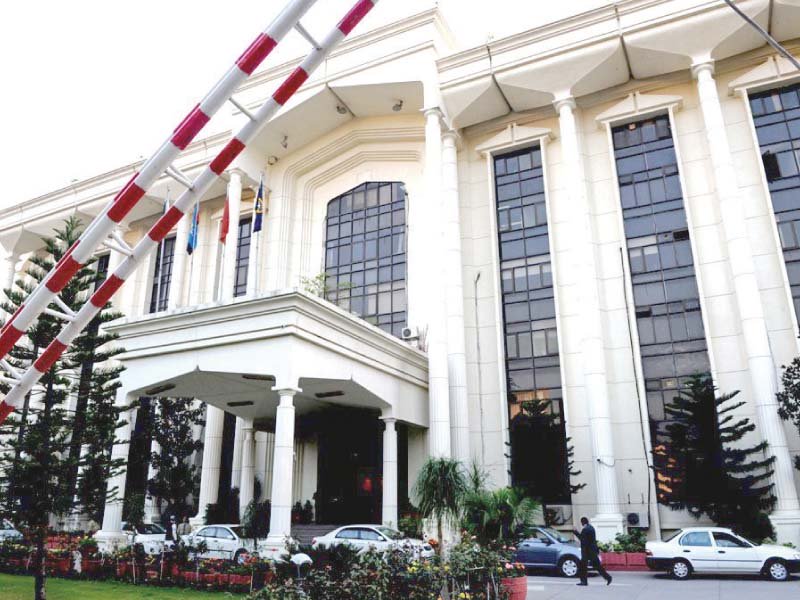
ISLAMABAD: In a bid to lower the cost of production for export-oriented industries, the commerce ministry proposed on Thursday to cut customs duty rates by up to 72% on hundreds of items in addition to completely abolishing duties on another 151 items.
The ministry has forwarded a list of 515 items to the Federal Board of Revenue (FBR), requesting reduced duty rates on them in the fiscal year 2018-19 budget, which the government will present in the National Assembly on April 27.
For quite some time, Pakistan has been struggling to improve exports, which are equal to only 6.9% of the country’s total national output. This ratio was double a few years ago. Due to constant decline in exports during the last three years, Pakistan’s external debt-bearing capacity has significantly weakened. The external debt to exports ratio was 193.2% when the PML-N came into power, which has deteriorated to 302.5% in 2017, according to the IMF report.
The proposed tariff lines are roughly 7.2% of the total tariff lines that are subject to various duties. The proposed tariff rationalisation will improve the competitiveness of leading export sectors including textiles, apparel, leather, spices, chemical products, plastics and articles thereof and iron and steel, according to the commerce ministry.
If the FBR accepts the commerce ministry proposal, it will dent its tax revenues by Rs16 billion. However, the FBR’s overall revenues would not be affected, as the recent 10% devaluation of the rupee against the US dollar would provide huge benefit to the tax authorities.
There are four slabs of custom duties ranging from 3% to 20% excluding the special custom duty rates. The lowest rate is charged on raw materials and the highest on finished products. But there are certain finished goods that become inputs if they are used in production of other goods.
The commerce ministry has proposed to lower tax incidence by one-fifth on 200 tariff lines that are currently subject to 20% customs duty rates. It has proposed to lower the rate to 16% to provide a boost to these industries.
The ministry has also proposed to cut customs duty rates on 32 tariff lines by 31.2%. It has suggested reducing the rates to 11% from 16%. Similarly, it has proposed cutting customs duty on 49 tariff lines by 27.2%. As against current duties rates of 11%, the commerce ministry has proposed to set the rate at 8% for these 49 tariff lines.
The customs duty rates on 28 tariff lines that are currently subject to 11% rate have been proposed to be lowered to 5% - a relief of 54% in the tax burden. The ministry has also recommended slashing the duties on four tariff lines by 72%. Against the existing rate of 11%, the ministry wants only 3% rate for these four items.
Similarly, there are 151 tariff lines for which the commerce ministry has proposed completely eliminating the current 3% customs duty rates. Also, the ministry wants regulatory duties on those 51 tariff lines to be abolished which are also subject to anti-dumping duties.
The ministry undertook a detailed exercise before proposing reductions in duties to make sure that these tariff lines do not reduce the protection available to local industries, said Mohammad Ashraf, the spokesman of the commerce ministry. He also said that the ministry was not in favour of undue protection, which leads to distortions in the market.
The customs duty and special duties have become an important and easy source of revenue generation for the FBR. Any increase in customs duty rates automatically results in an increase in collection of sales tax and withholding taxes, as these taxes are calculated after including all the duties and levies into the price of the goods.
The FBR collects roughly 48% of its total taxes at the import stage, which is also one of the reasons behind fewer efforts in areas where the tax machinery is not able to collect taxes to the true potential.
But the export-oriented industries, on the other hand, would have an advantage due to lower prices of raw materials.
Last week, Advisor to Prime Minister on Finance Miftah Ismail said that the government would roll back regulatory duties that it recently imposed on raw materials and intermediary goods.
In an official handout, the commerce ministry said that during deliberations for formulation of Strategic Trade Policy Framework 2018-23 one of the key enablers identified for increasing the competitiveness of the export sector is the rationalisation of tariffs on critical inputs of export-oriented industries.
Published in The Express Tribune, March 23rd, 2018.
Like Business on Facebook, follow @TribuneBiz on Twitter to stay informed and join in the conversation.































































COMMENTS (3)
Comments are moderated and generally will be posted if they are on-topic and not abusive.
For more information, please see our Comments FAQ